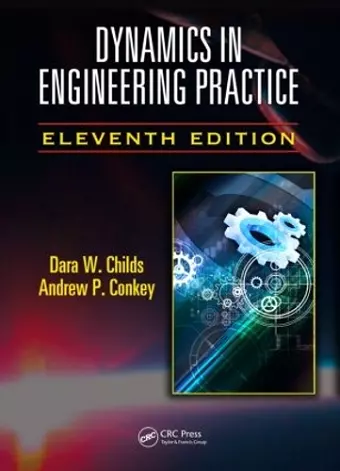Dynamics in Engineering Practice
Andrew P Conkey author Dara W Childs author
Format:Hardback
Publisher:Taylor & Francis Inc
Published:1st Apr '15
Currently unavailable, and unfortunately no date known when it will be back

Observing that most books on engineering dynamics left students lacking and failing to grasp the general nature of dynamics in engineering practice, the authors of Dynamics in Engineering Practice, Eleventh Edition focused their efforts on remedying the problem. This text shows readers how to develop and analyze models to predict motion. While establishing dynamics as an evolution of continuous motion, it offers a brief history of dynamics, discusses the SI and US customary unit systems, and combines topics that are typically covered in an introductory and intermediate, or possibly even an advanced dynamics course. It also contains plenty of computer example problems and enough tools to enable readers to fully grasp the subject. A free support book with worked computer examples using MATLAB® is available upon request.
New in the Eleventh Edition:
A large number of problems have been added; specifically, 59 new problems have been included in the original problem sets provided in chapters two through five. Chapter six has been added and covers the application of Lagrange’s equations for deriving equations of motion.
The new and improved chapters in this text:
- Address the fundamental requirements of dynamics, including units, force, and mass, and provides a brief history of the development of dynamics
- Explore the kinematics of a particle, including displacement, velocity, and acceleration in one and two dimensions
- Cover planar kinetics of rigid bodies, starting with inertia properties and including the mass moment of inertia, the radius of gyration, and the parallel-axis formula
- Explain how to develop equations of motion for dynamics using Lagrange’s equations
Dynamics in Engineering Practice, Eleventh Edition shows readers how to develop general kinematic equations and EOMs, analyze systems, and set up and solve equations, using a revolutionary approach to modeling and analysis along with current computer techniques.
"It is easy to identify students who learned dynamics from (previous editions) of this book…. They are confident, they approach new problems based on fundamental principles, they are not afraid of dynamics. The integrated, differential equations & fundamental principles based approach removes the dread from dynamics! No longer is there fear an uncertainty of picking the correct equation & guessing the correct special case… every problem can be methodically approached from the same few principles and conquered."
—James R Morgan, Charles Sturt University, Bathurst, NSW, Australia
"It is easy to identify students who learned dynamics from (previous editions) of this book…. They are confident, they approach new problems based on fundamental principles, they are not afraid of dynamics. The integrated, differential equations and fundamental principles based approach removes the dread from dynamics! No longer is there fear; an uncertainty of picking the correct equation and guessing the correct special case… every problem can be methodically approached from the same few principles and conquered."
—James R Morgan, Charles Sturt University, Bathurst, NSW, Australia
ISBN: 9781482250251
Dimensions: unknown
Weight: 1376g
474 pages
11th edition